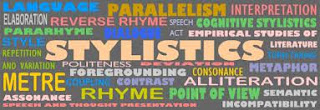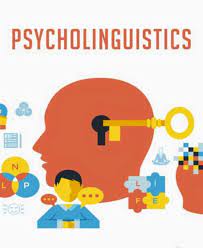Stylistics
The study of variation in language and the use of language in communication has led to new ways of studying literary texts and the nature of literary communication. The notion of the register is in fact a kind of ‘language’ that is considered appropriate for a particular subject matter, eg; the style of a religious sermon, the style of sports commentary. Similarly, we may use this notion to describe the style of a literary work. That is, we may describe its features at the levels of phonology, syntax, lexis, etc to distinguish it from other texts and to appreciate how it achieves some unique effects through the use of language. This kind of study is called literary stylistics.
Literary writers use the system of language in their own way, ie, they create a style. This is done by deliberate choice, sometimes by deviation from or violation of the rules of grammar. Poets and even prose writers may invert the normal order of items. By these and other devices, they can manipulate language so that it conveys some theme or meaning with great force and effectiveness.
In literary stylistics, we read the text closely with attention to the features of language used in it, identifying and listing the particular features under the heading of lexis, grammar, phonology, or sound patterns. When we have obtained a detailed account of all these features, we co-relate them or bring them together in an interpretation of the text. That is, we try to link ‘what is being said with ‘how it is being said since it is through the latter that writers can fully express the many complex ideas and feelings that they want to convey. The stylistic analysis also helps in a better understanding of how metaphor, irony, paradox, ambiguity, etc, operate in a literary text as these are all effects achieved through language and through the building up of a coherent linguistic structure.
Stylistics is different from literary criticism in the following way: It is a systematic study of features of style and variations in style at each level of language structure. Stylistics does indeed have something in common with traditional rhetoric. For example, the study of features such as rhyme scheme, meter, diction, figures of speech such as metaphor, simile, etc, was done by literary scholars even in ancient times. Particular attention was given to these devices in poetry, as these were considered as part of the aesthetic appreciation of poetry.
The stylistic study of literature involves the following:
A detailed description of each linguistic feature at each level. The phonological level includes the combinations of individual sounds and the patterns of syllables that make up the meter. The level of syntax includes the ordering of items in the sentence, and the length and complexity of clauses and phrases. Diction studies the choice of particular words and of synonyms, antonyms, etc. At the semantic level, the extension and association of meaning through the use of ambiguity, substitution, etc, form the focus of attention.
A description of those features which are prominent in the text, because a. they are repeated, b. they are placed at prominent positions, or c. they depart from the given grammatical rules of the language.
Analysis of all these components enables the stylistician to reach some conclusion regarding the particular nature and qualities of the literary work and pinpoints the variations that make it different from other works.
Stylistics in modern times came up through the work of linguistics like Roman Jacobson, who applied the ideas of Saussure to the language of literature. Jacobson refers to the paradigmatic and syntagmatic relationships in language as explained by Saussure and shows that, in literary use of language, those items that are related at the paradigmatic level are shifted to the syntagmatic level. Literary language upsets the normal syntagmatic sequence in some way and thus becomes different from ordinary language.
The shifts from ordinary language create parallelism and deviations. Both these devices function to create the effect of foregrounding. This is a term used by the linguists of the school of Russian Formalism. According to them, foregrounding is the effect of unique features in the text that are different in some way from the normal, and thus stand in contrast to the ordinary language. The style of a literary text is a totality of all such foregrounded elements.
Uses of Stylistic Study of Literature
One of the uses of the study of literature is in the interpretation and appreciation of literary texts. Often, judgments about literature have been made impressionistically or subjectively, without providing the evidence for such judgments in the text. The stylistic study provides clear evidence in the text, based on which judgments can be made. The evaluation of the greatness or otherwise of literary works can thus be made based on objective facts of language found in the text itself.
Another use of stylistic study is to establish authorship in cases where it may be doubtful. Comparison of the styles of different authors, or of different texts by the same author, can reveal the particular characteristics of a genre or a period in literary history, eg; comparison of similar features in some poems can show that they all belong to a certain sub-class of poetry written in a specific age.
Overall, the stylistic study of literature is of interest to the linguist as it reveals variation in language that takes place within certain contextual parameters. It reveals much about the creative and open-ended aspects of language use. Many coinages and expressions used by poets and writers pass into the conventions of the language and may themselves become the norm. Thus, deviation, patterning, etc are not to be found only in literary texts but also in other areas of language use, eg; advertising, journalism, political language, and popular songs. This opens up a wide area of language variation and language use which is an interesting object of study for understanding more about language and its role in society.



















